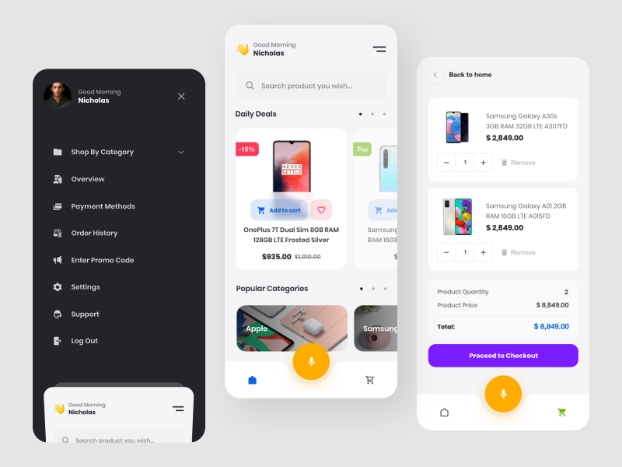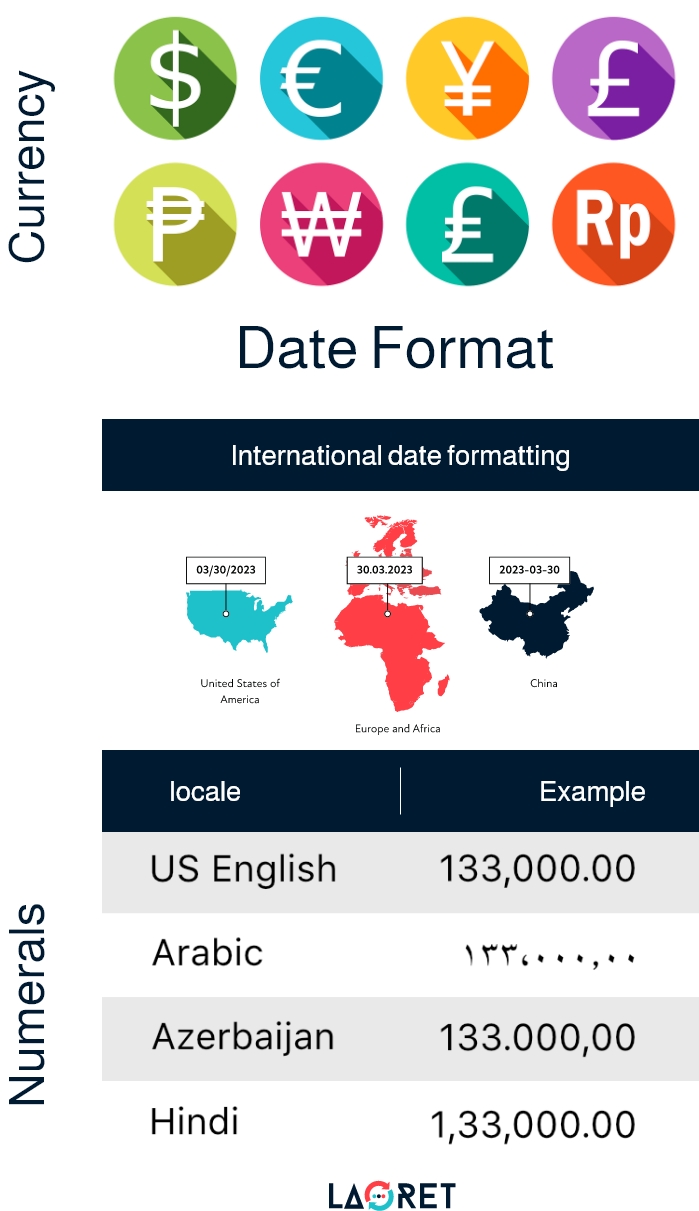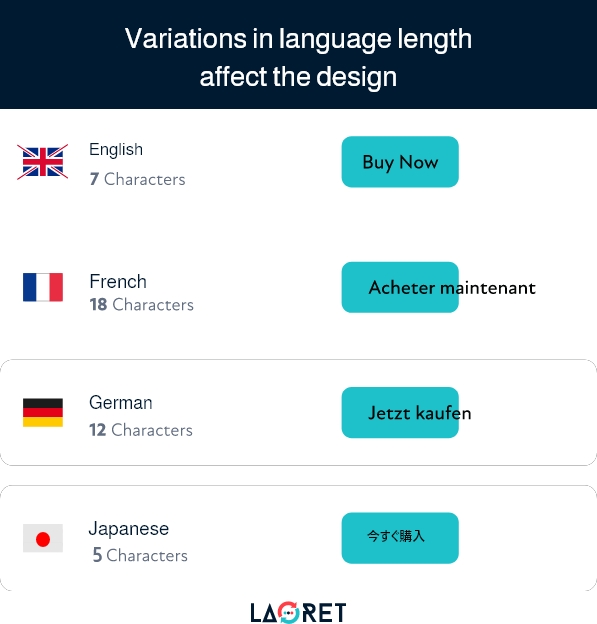UI Localization: One Step to Attract and Retain Global Users
Many businesses assume that simply translating text on a website or within an app seems to address the need for an “internationalized” user experience. After all, if users can read content in their own language, what more could be required?
This is a very common oversight in the process of preparing software, websites, or apps for global audiences.
User interfaces designed primarily for one market may not be intuitively organized, visually structured, or feature the expected interactions in other cultures — even when the text is translated.
That is why you should go for UI localization instead of adopting this surface-level translation approach that often falls short of providing a truly effective experience to worldwide users.
But what exactly is UI localization and how does it differ from translation? How can you start and what factors should you consider?
Today, we will answer all your lingering questions and offer you some guidance along the way to set you up for global success!
So, let’s jump in!
Understanding What A User Interface (UI) Is
A user interface refers to all the visual and interactive elements the end-user interacts with at each point of using a software application, website, or any digital product. It encompasses all the components, screens, menus, buttons, icons, and other graphical elements that users see and interact with to perform tasks, access information, and navigate your system.
While you and many others might think that a good user interface should mainly be visually appealing to users, a well-designed user interface does far more than just look pleasing to the eye.
Factors such as usability, accessibility, and responsiveness need to be a top priority when designing a user interface to ensure a smooth, intuitive user experience that engages users and enhances their experience. And that’s what localization aims at.
So what does localization do to your user interface (UI)
A Closer Look At UI Localization
UI localization is the process of tailoring the look and design of your software to provide a user-friendly experience for culturally and linguistically diverse customers. It’s more than translating the content within your product. It’s about providing end-users with an authentic experience and enabling seamless navigation and interaction with the digital application or system.
From adapting graphics and icon placement to resource files and error messages, UI localization’s main goal is to make the final product look and feel as if it’s specifically designed for this target market.
Needless to say, doing so requires a deep understanding of local requirements, cultural norms, and the preferences of target users. This way, you can easily customize a user-friendly experience that promotes accessibility and usability while being culturally relevant at the same time.
So, Is UI Localization Really Worth It?
If you’re looking for a short answer, it’s YES.
Although it may demand time and resources, the potential returns of UI localization far outweigh the initial investment. It’s the secret to developing a UI design that appeals to local audiences, enhances your commercial positioning, and fosters better user engagement.
In the following points, we provide insights that shed light on the tangible benefits of UI localization. So read on to learn how this strategic investment can boost your product’s adoption rates and propel your business to new heights.
First, Gain a Competitive Edge and Tap Into New Markets!
Did you know that over 70% of internet users are not native English speakers?
In fact, data shows that the top countries with the highest internet penetration rates don’t speak English as their first language. In 2023, Norway, Saudi Arabia, and the UAE ranked the highest worldwide with a 99% penetration rate.
Moreover, research shows that almost 3 in 4 users don’t understand more than 60% of all websites due to limited English proficiency. And when it comes to mobile apps, China and India are among the top countries for worldwide app downloads.
One clear takeaway from this is that localization opens up promising opportunities for growth for any business that aims to connect with diverse audiences in all these thriving markets through websites and apps.
Leveraging UI localization to cater to the needs of multilingual audiences will immensely help you stand out from the global competition. It also demonstrates your commitment to providing a superior experience that respects the diversity of users, meets their preferences and addresses their needs.
So, if your goal is to penetrate the global market and gain a competitive edge, this is the perfect time to start localizing your software UI.
Now: Boost Engagement, Satisfaction, and Sales!
The user interface serves as the gateway through which customers interact with your product or service. So, imagine the impact of a poorly designed app or website that leaves users frustrated and seeking alternatives.
Users will feel more prioritized when you embrace their language and cultural differences and make an effort to facilitate their experience on your website or app, which nurtures a sense of trust, fosters loyalty, and ultimately boosts satisfaction. So why is that important?
Satisfied users are actually more likely to be deeply engaged with your product or service, and higher engagement increases the likelihood of returning to your website or using your app again in the future and moving further down the purchase funnel. This ultimately leads them to convert by buying a product or signing up for a service.
What is more, satisfaction also makes users more inclined to recommend your brand to others in their social network and one positive word-of-mouth can bring in hundreds of customers. Research indicates that satisfied customers typically share their experiences with approximately 4-6 people.
Just imagine the significant number of potential customers that your business could attract.
Looking for proof? Compelling data supports these connections between localization, engagement, and revenue.
A study by Distomo found that companies that localized their app text enjoyed increased downloads by 128% and 26% revenue growth in each market. And according to a Forrester report, improving the usability and UI design uplifts conversion rates by 200%.
It’s important to note that UI localization’s role in reducing the costs of fixing technical issues and customer support expenses Take, for example, American Airlines. By fixing the usability problems and improving their website’s functionality, they reduced the cost of those fixes by 60–90%.
Key Considerations for Successful UI Localization
You’ve built the digital product of your dreams. But taking it worldwide might seem like a very daunting task – as we’ve said before, it takes more than software translation to develop a culturally relevant user experience. You must juggle varying preferences, local requirements, and linguistic subtleties. So how do you optimize for cultures as diverse as humanity without missing any crucial details?
We know it sounds overwhelming. So, why don’t we explore together key considerations to overcome common software localization challenges and launch your software with full confidence?
-
Look Out for Linguistic and Cultural Variations
When it comes to UI localization, diverse cultural and linguistic factors need to be taken into consideration. to avoid alienating international users instead of resonating with them. Cultural insensitivity as well as linguistic and technical inconsistencies could prove costly in ways beyond the balance sheet.
A technical bug, a translation mistake, or a culturally inappropriate image can all cost you money and customers. More seriously, they can jeopardize your company’s commercial and legal position.
So, here are 3 factors to consider to get it right from the get-go!
-
Currency, Numerals, Date, and Time Formats
Subtle elements like dates, times, and numerals vary greatly across regions due to cultural norms. Failing to account for these discrepancies can introduce avoidable confusion and greatly affect the user experience.
Consider date formats – While the standard date format in the United States is MM/DD/YY, it varies significantly in many other parts of the world. East Asian nations, for instance, use YY/MM/DD, and other countries in Latin America and Europe prefer the DD/MM/YY. format
The same applies to numerals and time formats. Some regions are accustomed to the 12-hour time format while others rely on the 24-hour one, and while Indians and Arabs prefer digits separated by commas, many Asian languages write numerals vertically.
When your user interface displays do not conform to familiar standards in the target market, it could derail tasks like entering birthdates, scheduling deliveries, or processing monetary figures. This lack of consistency potentially undermines the integrity and credibility of your brand on a global stage.
-
Visual Elements and Graphics
As much as you have to adapt textual content, visual elements require thoughtful adaptation too. Graphical aspects such as typography, symbols, and colors have diverse cultural meanings around the world.
Typography, icons, and other non-verbal design features that may be universally understood in one context could generate unexpected associations elsewhere or be really offensive. In some areas, for example, red signifies danger, while in China it represents luck or celebrations. Using red text carelessly can disengage and alienate your audience.
In order for your software UI to feel personalized and inclusive for all users, not just linguistically but culturally as well, graphic components need to align with local conventions and be culturally sensitive by all means.
-
Text Expansion and Contraction
Another critical factor to consider when translating the content of your UI is the variation in text length after translation. This is called text expansion and contraction.
When you translate a text from one language to another, you can’t expect the text length to be the same. The number of characters or words needed to convey the same message varies significantly depending on the target language. Have a look at the following examples:
- German and French are considerably more extensive compared to English. A phrase like “Buy Now” that contains 7 characters will double in size when translated into French, as we show below.
- Languages like Japanese, Chinese, and Korean use double-byte characters. This means they’re twice as wide as normal alphabetic characters and can’t be represented with single-byte codes.
Not adjusting for these potential length variances could significantly alter the whole design of your software, causing buttons, pop-up messages, and page layouts to appear cramped or distorted in different languages, which definitely necessitates extensive and costly reworking.
Luckily for you, it is possible to steer clear of potential design pitfalls prior to launching your website or app, even if internationalization was overlooked in the development stage. It is all thanks to a strategic process called pseudo-localization. This is what we’ll dive into next. So, keep on reading!
-
Missed Internationalization? It’s Never Too Late
Internationalization is the process of designing a product that accommodates the needs of international users. In other words, it’s a method to develop a neutral product that can support multiple languages and cater to various cultures, paving the way for an easy, flawless localization process.
But while it’s ideal to incorporate internationalization from the beginning, if it was overlooked during the development process, all hope is not lost. Pseudo-localization comes to the rescue as a very helpful testing method that can help address missed internationalization.
Relying on pseudo-localization helps you tackle design challenges and ensure smoother localization proactively. The process enables simulating translation and experimenting with text length variations, special character usage, and layout adjustments to help identify potential design issues before undergoing actual translation.
Don’t hard-code your graphics! Use editable strings for every localizable element to save time and effort and avoid extensive code changes.
Need more guidance? We got your back!
Our comprehensive guide explains the software localization process from A to Z and provides you with expert tips and tricks.
Take your Multilingual Software to New Heights with Laoret’s Localization Solutions!
Going global with your software but not sure where to start? Let us empower your business and help you break down cultural barriers with ISO-certified software localization solutions!
With Laoret’s software localization services, you can customize the user interface and user experience with the expertise of native, in-country specialists.
Our software localization quality assurance provides rigorous technical and linguistic testing to offer you a cost-effective process with the highest level of quality. With our state-of-the-art translation technology and software simulation system, we uphold your brand identity across different languages and cultures.
Request a FREE quote now and talk to one of our experts!













